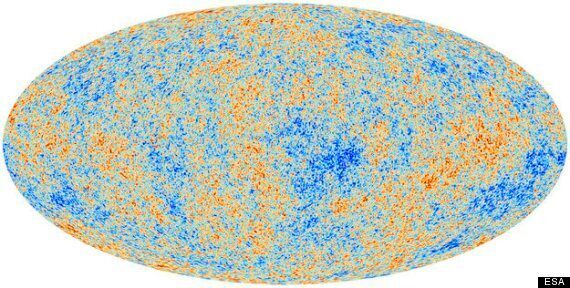Scientists have created a 'high fidelity' simulation of what the Big Bang sounded like.
Despite there being no one around to hear it at the time, scientists have known for ten years what noise it produced.
Rather than the devastating galactic blast that you might assume, the noise is more akin to a long, low whimper.
The new hi-fi version builds on work by professor emeritus John Cramer who in 2003 used mathematical wizardry to turn data on the cosmic microwave background (thermal radiation from the big bang which now faintly and uniformly fills the universe) into a sound.
More detailed data from the European Space Agency's Planck satellite has allowed for the new version to be created.
Amazingly, the sound represents a whopping 760,000 years - a blink of an eye in universe terms.
The gradually lowering noise is the effect of the expanding nature of the universe on sound-waves - like when a police car siren gets lower when it drives past.
The noise has been scaled up as the sound-waves would actually be inaudible to the human ear.

The image of the universe created by Planck
The data for the noise was gathered by the Planck satellite by observing microwave radiation across the sky over 15 months, and stripping out dust emissions and radio frequencies from the Milky Way galaxy and more distant objects to leave just the afterglow of the Big Bang.
An amazing 50-million pixels all-sky image of cosmic background radiation (CMB) made by the £515 million satellite is the most detailed ever created and has already led to new theories of the age, composition and future of the universe.
The original low fi version: